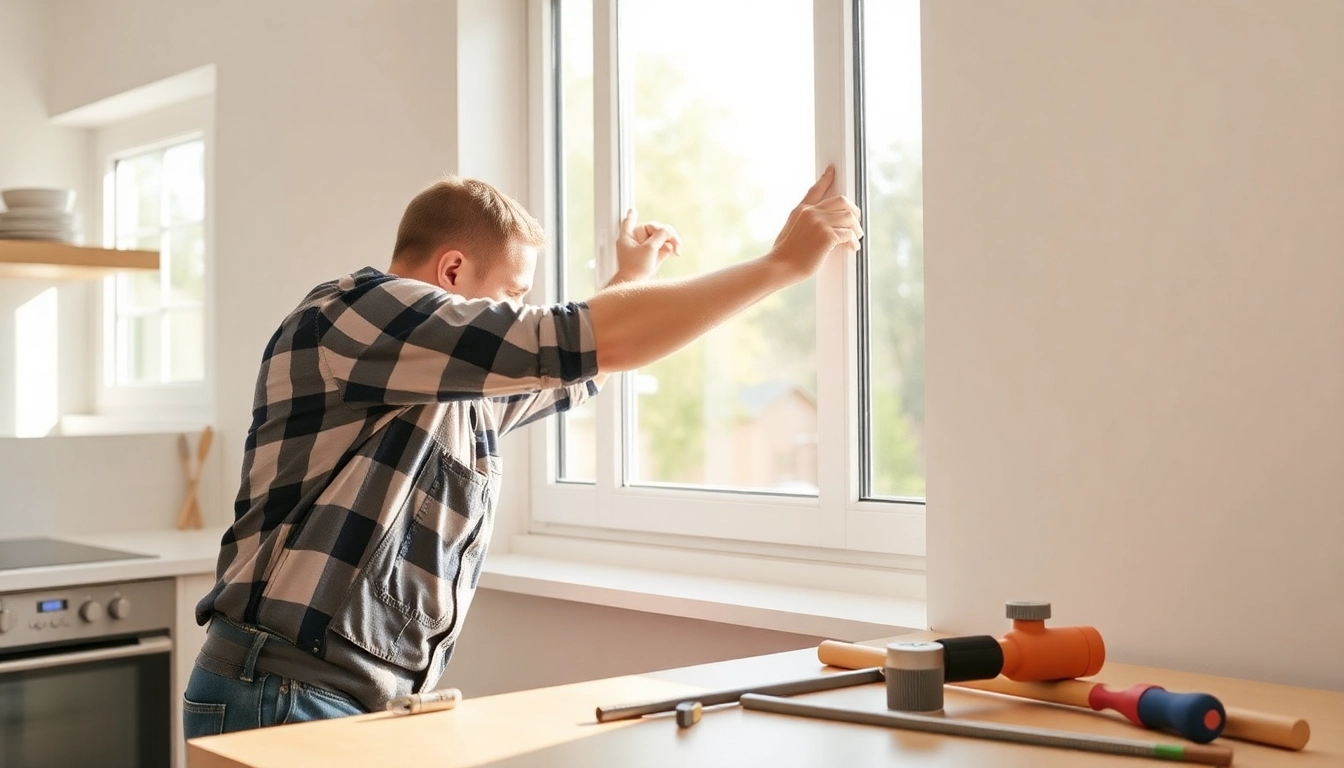Window Installers Near Me: How to Choose the Right Local Team
Key criteria for selecting a local window installer
- Proper licensing and adequate insurance, including general liability and workers’ compensation.
- Manufacturer certifications and installer credentials (look for AAMA or NFRC-affiliated professionals when possible).
- Proven experience with the window types you want (vinyl, wood, fiberglass, or composite) and retrofit vs. full-frame installations.
- Clear, detailed written estimates with product specs, warranty coverage, and a defined scope of work.
- Strong references and verifiable project portfolios; check recent client feedback.
- Commitment to safety, site protection, cleanup, and a transparent timeline with milestones.
Questions to ask before signing a contract
Ask about scope and responsibilities (permits, flashing, and exterior finishes), the installer’s project team, sequencing and access requirements, and how changes are managed. Inquire about lead times, payment schedules tied to milestones, and how the crew handles weather-related delays. Request a written warranty detailing both installation labor and manufacturer coverage, plus who honors service calls after project completion.
How to compare quotes and timelines
Compare apples to apples by examining product data (U-factor, SHGC, and vandal resistance where applicable), frame material quality, and glass options. Consider installation method and waste management, not just the bottom line. Evaluate lead times against your schedule and ask for a project calendar with key milestones, inspection dates, and a defined final walkthrough to confirm satisfaction.
Understanding Window Installation Process: Steps, Timelines, and Quality
Pre-installation site assessment and measurements
A precise assessment begins with measuring rough openings, verifying wall integrity, and confirming orientation relative to sun exposure. Expect accuracy checks for each opening, inventory of required flashing and air-seal materials, and a review of any existing moisture or rot issues. A good crew will document the as-built conditions and confirm product selections before ordering components.
Typical installation timeline and milestones
Most residential installations span several days for a full-home replacement, though timelines vary with house size and retrofit complexity. Milestones typically include removal of old units, preparation of openings, installation, sealing and flashing, interior trim, exterior finish work, and a final inspection. A well-structured plan minimizes downtime and reduces the risk of weather-related setbacks.
Common installation challenges and how to avoid them
Common issues include measurement drift, improper flashing leading to water intrusion, air leaks, and misaligned sashes causing operation problems. Preventive steps are meticulous pre-measurement, using two-person verification, and ensuring the crew uses appropriate shims and sealants. Early attention to moisture control and rain protection helps avoid costly callbacks.
Choosing Energy-Efficient Windows with Window Installers Near Me
Types of energy-efficient windows and their benefits
Energy-efficient options typically feature double or triple panes, low-emissivity (low-E) coatings, and inert gas fills to reduce heat transfer. Look for favorable NFRC ratings that reflect U-factor (heat transfer) and Solar Heat Gain Coefficient (SHGC). Benefits include lower heating and cooling costs, improved comfort across seasons, and reduced outdoor noise transmission.
How window frames affect insulation and comfort
Frame materials influence thermal performance and maintenance needs. Vinyl and fiberglass frames often provide strong insulating properties with low maintenance, while wood-clad frames balance aesthetics with performance. Aluminum frames require thermal breaks to limit heat transfer. In each case, a well-sealed frame and proper insulation between the frame and rough opening are essential for comfort.
Choosing sizes, styles, and finishes with a pro
Work with a pro to determine glazing choices for daylight, ventilation, and security. Consider style compatibility with your home’s architecture, operable configurations for egress, and finishes that resist fading and moisture. A professional can also guide you on color-matched interiors and hardware options that optimize both function and curb appeal.
Cost, Quotes, and Scheduling: Planning Your Installation
Understanding pricing: materials, labor, permits
Costs break down into product price (frame and glass), installation labor, waste removal, and any required permits or inspections. Premium glass coatings, gas fills, and specialty hardware add to the price but can deliver long-term energy savings. Request a line-by-line estimate to understand where value is created and where costs can be reduced without compromising performance.
Scheduling considerations and lead times
Lead times depend on product availability, current demand, and weather windows. Peak seasons may stretch timelines, while off-peak periods can offer faster scheduling. Coordinate access for crews, plan for uninterrupted utilities, and request a contingency window to accommodate unexpected delays.
What affects project delays and how to mitigate
Delays arise from weather, backordered components, inaccurate measurements, and permitting bottlenecks. Mitigation strategies include confirming measurements early, locking in a flexible start date, maintaining proactive communication, and having contingency materials on hand when possible.
Quality Assurance: Warranties, Maintenance, and Performance Metrics
Warranty coverage, service policies, and maintenance tips
Expect installation labor warranties spanning multiple years, complemented by manufacturer product warranties. Document all warranties, understand what triggers coverage, and follow maintenance practices such as regular cleaning, seal checks, and prompt attention to any signs of moisture intrusion or seal failure.
Measuring success: performance metrics after install
Assess success through objective metrics: improved comfort in formerly draft-prone rooms, stable indoor humidity, and measurable reductions in energy bills where data is available. Post-install inspections, including visual checks and, if feasible, infrared air sealing tests, help verify performance goals were met.
Post-installation support and customer care
Reliable installers offer follow-up communication, a clear process for service requests, and periodic check-ins to address wear and tear. A strong customer-care program reduces anxiety about large purchases and supports long-term satisfaction with your investment.



